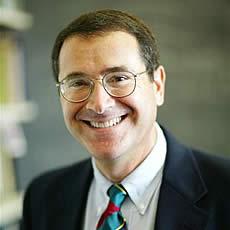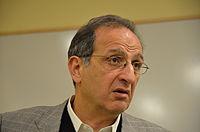Tear them down? “White Jesus” statues have an Unsavory History in Aryan Racial Theory that also Influenced Nazi Theology
Ann Arbor (Informed Comment) – Emily McFarlan at the Religion News Service explores the controversy over depictions of Jesus as white in American statues. She notes that Brooklyn activist and podcaster Shaun King wrote that
- “Yes, I think the statues of the white European they claim is Jesus should also come down. They are a form of white supremacy. Always have been. In the Bible, when the family of Jesus wanted to hide, and blend in, guess where they went? EGYPT! Not Denmark. Tear them down.”
It should be noted that many depictions of Jesus in the partially Near Eastern Byzantine Empire had showed him with a healthy melanin component:

McFarlan discusses the enormously influential 1940 “Head of Christ” painting by evangelical Warner E. Sallman.
I don’t know what Sallman’s politics were, but his painting actually stands in a longer tradition of racialist theology in European Christianity that goes back to the nineteenth century and the rise of Aryan racial theory.
Eighteenth-century thinkers in Europe tended to believe that race was produced by climate– by geography, weather and so forth. When Scots went out to India for the predatory and ultimately imperial East India Company, they were afraid European medicines would not work there, given the starkly different climate.
In the mid-nineteenth century a genealogical conception of race took hold in Europe, whereby it was a matter of “pure” “blood,” i.e. descent. The discovery of Sir William Jones out in India in the late 1700s that Sanskrit and Bengali were related to Greek, Latin and other European languages (including English) had produced a linguistic theory of “Aryan” languages. People who spoke those languages came to be thought of as descending from the Aryan people who gave their name to Iran and Ireland.

Aryan linguistic theory, however, is not racial. Lots of people speak Indo-European languages who aren’t genetically similar. African-Americans speak English, and so do millions of Africans. The Hazaras of Afghanistan, thought to be descendants of Mongols, speak Persian, an Indo-European language. But Aryan-ness was misinterpreted by racist thinkers like Ernest Renan and the Comte de Gobineau as racial.
This new descent-based theory of racial difference, inflected with language, made all sorts of problems and contributed many decades later to the Nazi Holocaust against six million Jews.
Proponents of Aryan racial theory had to deal with their new and often unwelcome kinship with Iranians and Indians. The British found ways to demote Indians as inadequate Aryans who had become pantheists. Though, Gobineau, who was French ambassador to Iran, actually seems to have become enamored of Iranian culture.
Another big problem was that if “Aryan” or Indo-European languages were racialized, then so were other language families. Hence, Jews and Arabs were “Semites.” Genetic studies have shown, in contrast, that Ashkenazi Jewish women of European heritage are overwhelmingly have the haplotypes of Germans, Poles and Russians rather than those of Lebanese, Syrians and Middle Eastern Jews.
But Aryan racial theory rose and fell before people knew anything about genetics. So Jewish elites in Europe were suddenly depicted as inferior “Semites,” in contrast to superior Aryans. Aryans were portrayed as dynamic, intelligent, creative, inventive, conquering and civilized. Semites were assimilated to Bedouins and the French in Algeria depicted Algerians as lazy, unprincipled, unintelligent, and so forth.
That created a big problem for Christians. All of a sudden they were following a lowly, abject Semite in the person of Jesus of Nazareth.
So Renan Aryanized Jesus, as Ralph E. Lentz II pointed out in his thesis.
Theories were developed that Jesus was from an Aryan stock that came to the Middle East, whether Iranians in the Galilee (yes) or even Europeans.
It was also argued that the periods of Iranian, Persian, rule of Palestine endowed that culture with a dynamic Manichaean contrast between good and evil, and dark/light imagery that is all through the now-Aryan New Testament.
In the nineteenth century US, Aryan racial theory appealed to Protestant Know-Nothings and contributed to the barring of Asians from the United States. A popular theological position at that time came to be that “the writings of St. Paul reflected an ‘Aryan tone'” and “that anyone who called Jesus a Jew was a fool or a liar.”
By the 1930s there was a full-blown Nazi theology of Jesus as an Aryan in Germany and Nordic countries. Suzannah Heschel has written about the Aryan, Nazi Jesus in Germany. (See her summary in the LA Review of Books). Alas, in this version, Paul was de-Aryanized and made the sinister Jewish figure who distorted the Aryan teachings of Christ.
Both Nazi theology and one strain of US evangelicalism had roots in nineteenth-century Aryan racial theory as applied to Jesus.
US Evangelicals’ love affair with Donald Trump is wrought up with this tradition of whitening Christianity. Trump is of German and Scottish extraction, and when he was trying to defeat Ben Carson for the presidency, he emphasized his “mainstream” Presbyterianism against Carson’s sectarian 7th Day Adventism. These themes sere all underlain by race (with the implication that African-Americans are more often cultists, as opposed to White Christianity).
And, so, whatever Sallman’s own politics, his famous portrait has a sinister context. White Christians need to come to terms with the century of Aryanized Christianity that ensued from Renan, and which often demonized Jews and Black and brown people. And, yes, let’s put the creepy Nazi art away, guys.
For Juan Cole's own web site, please click here.
















